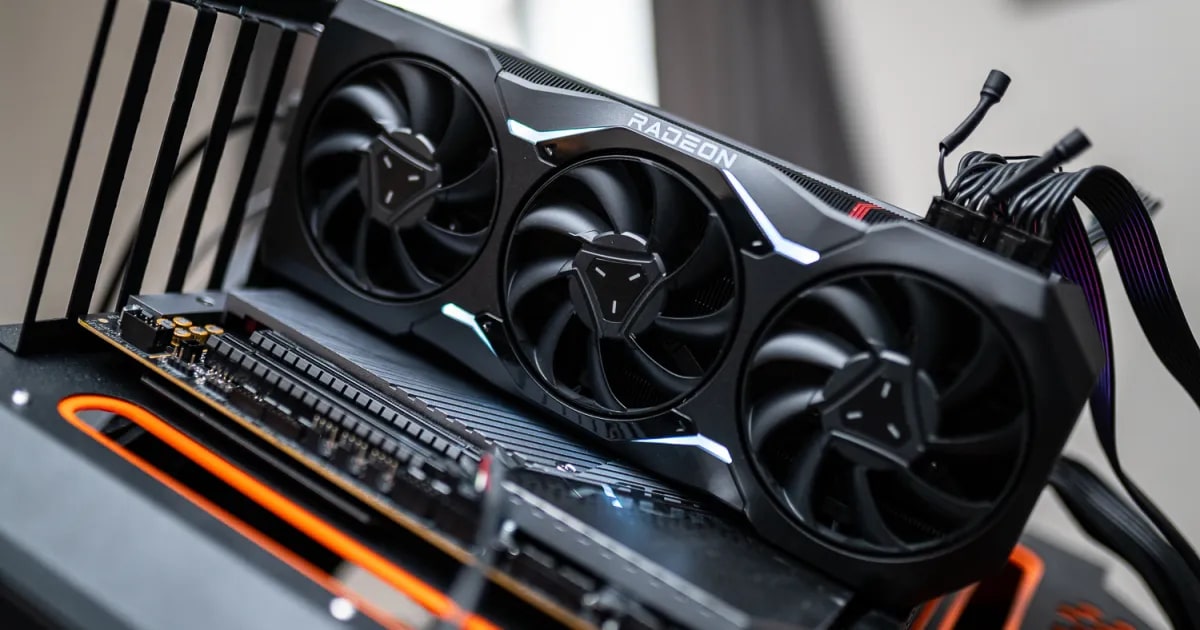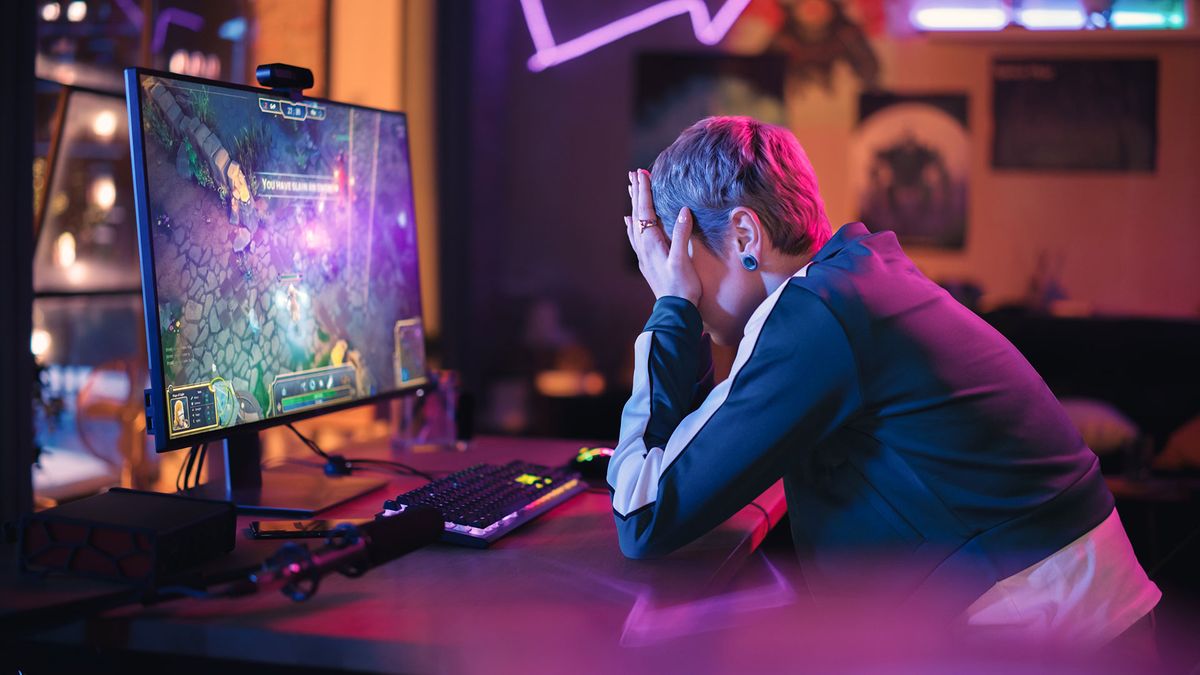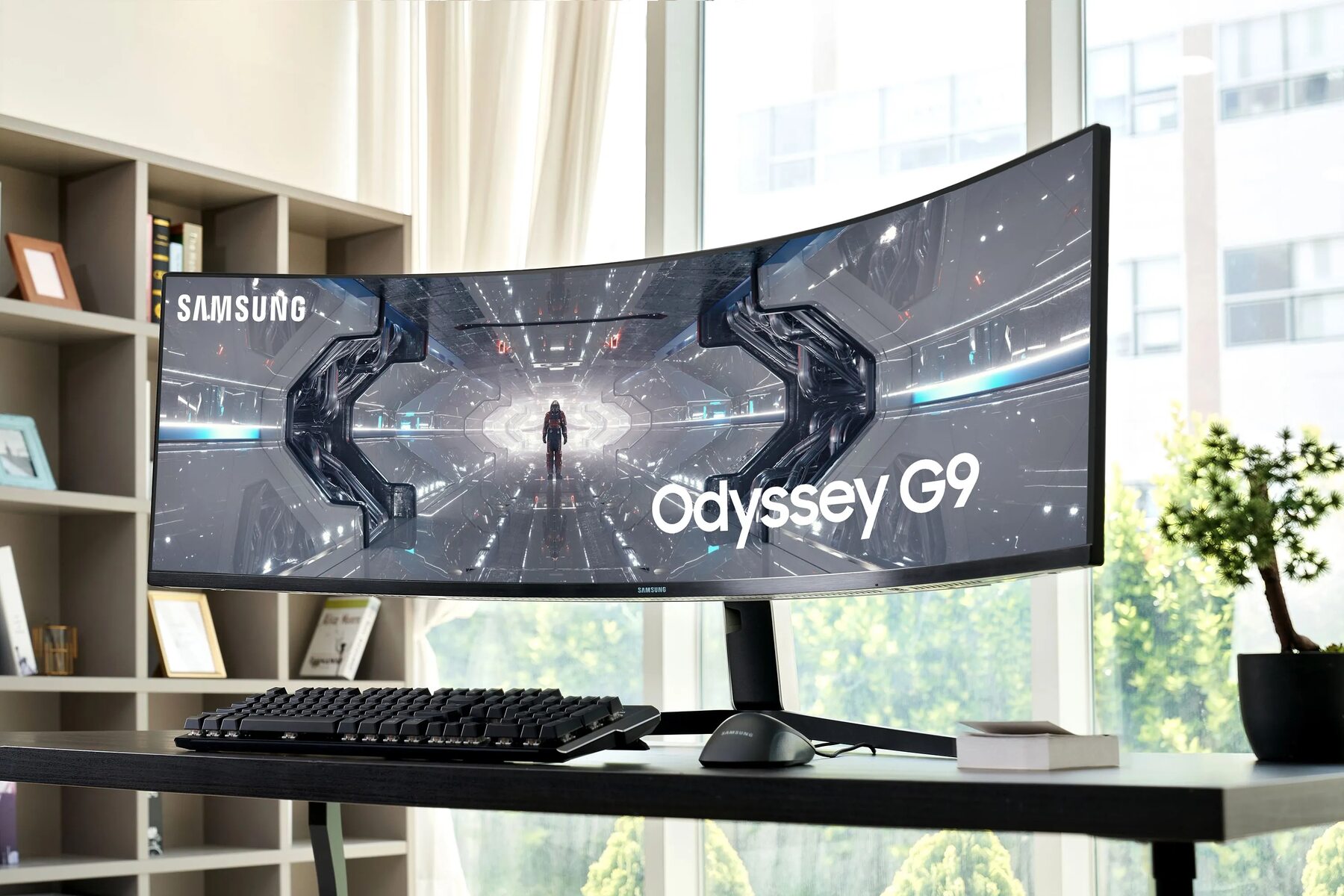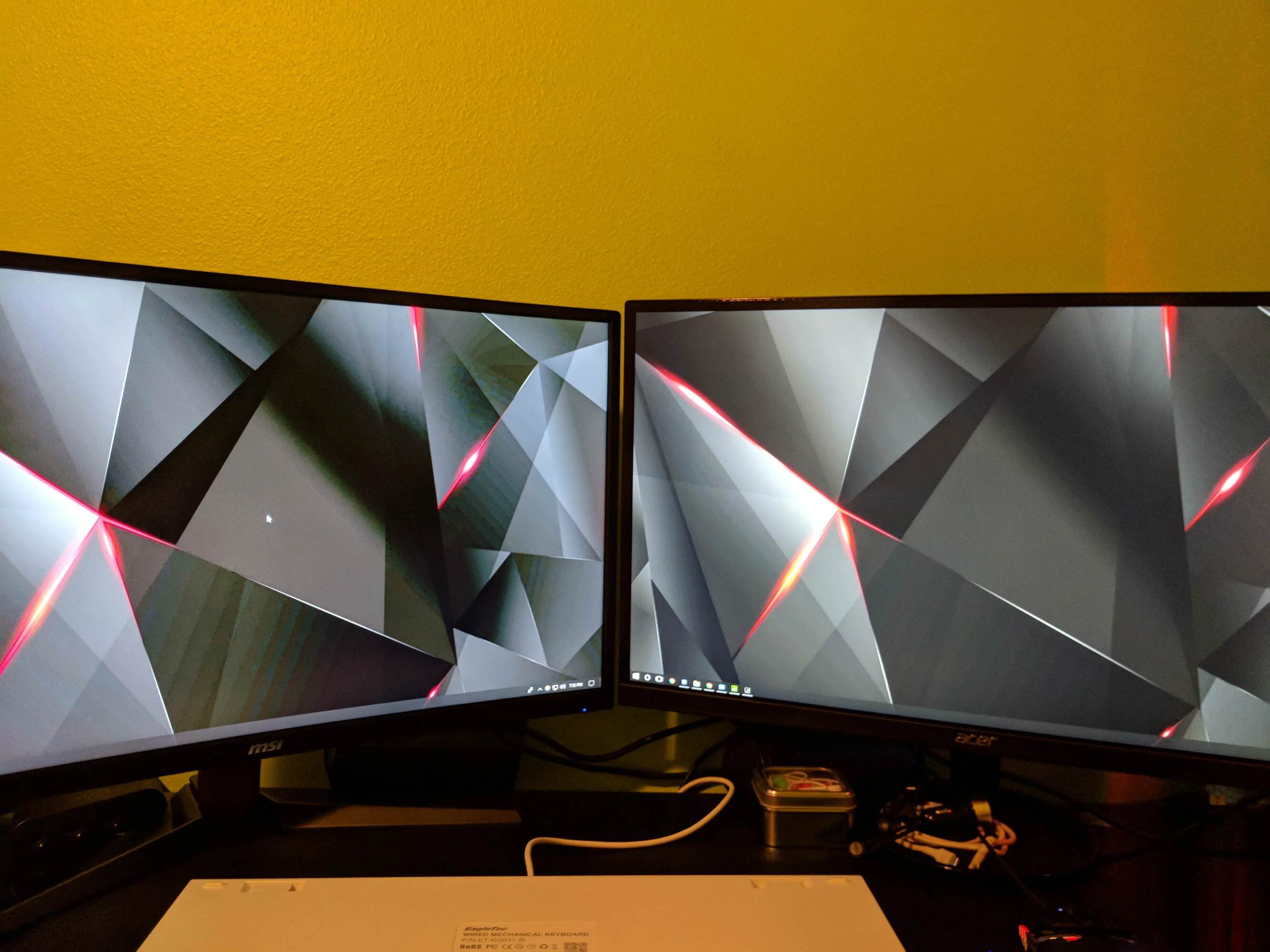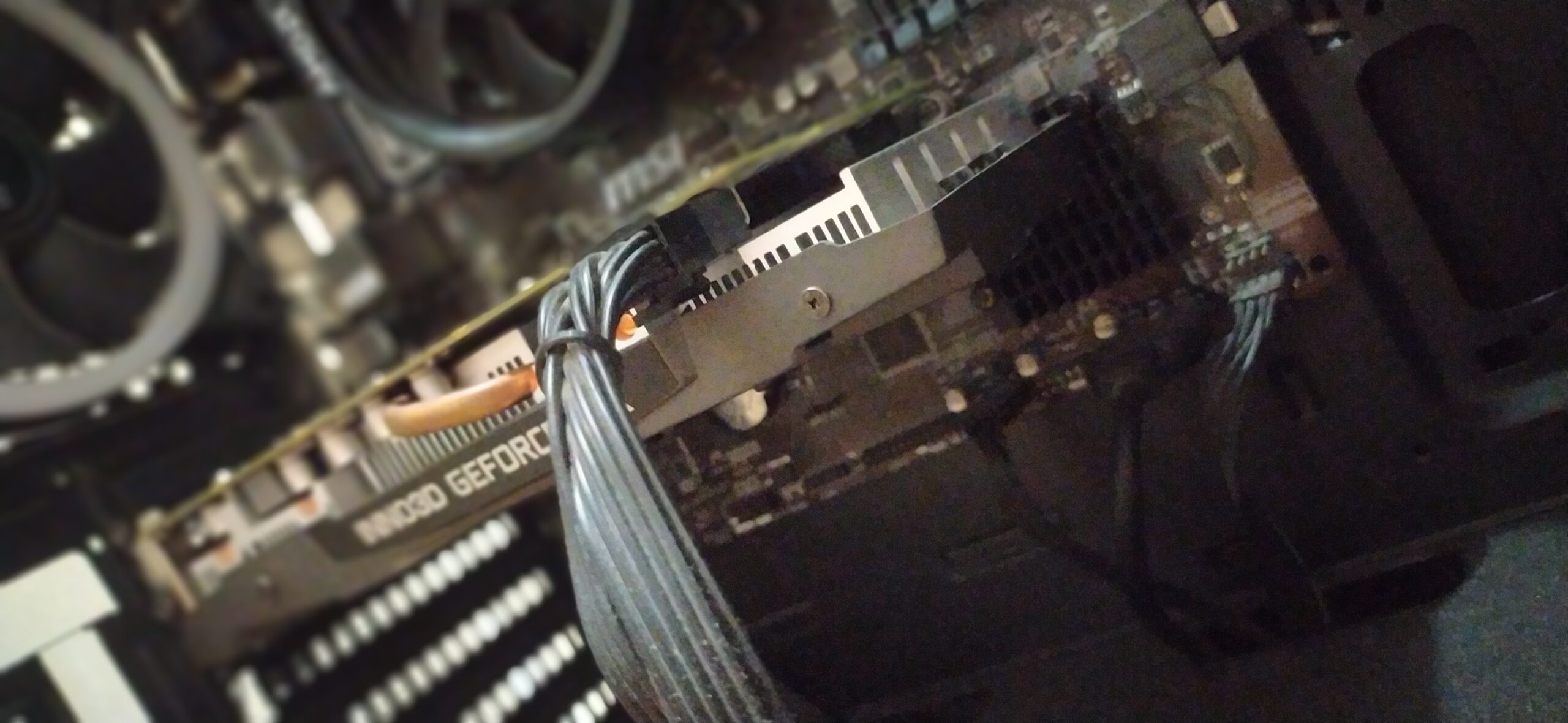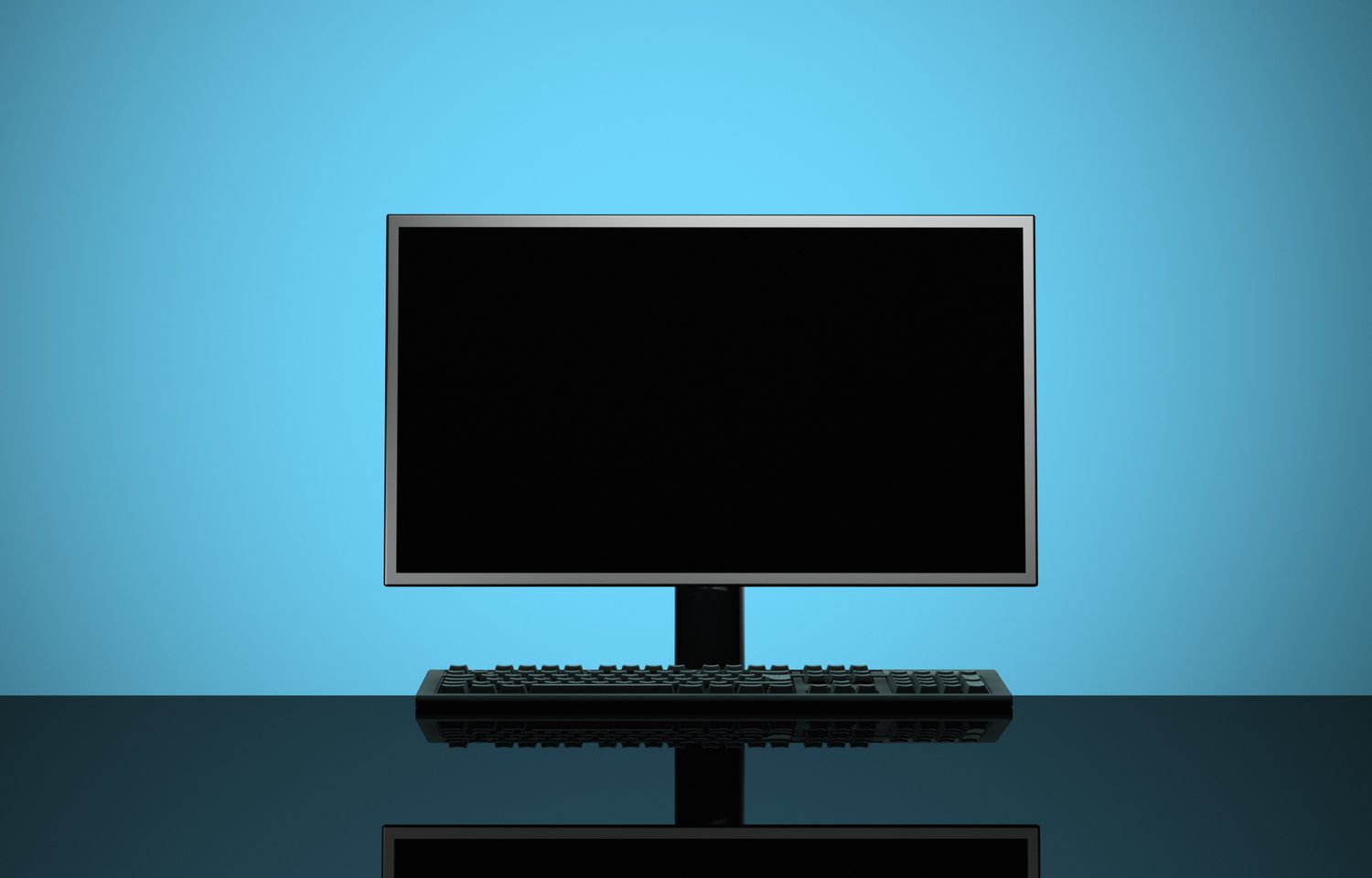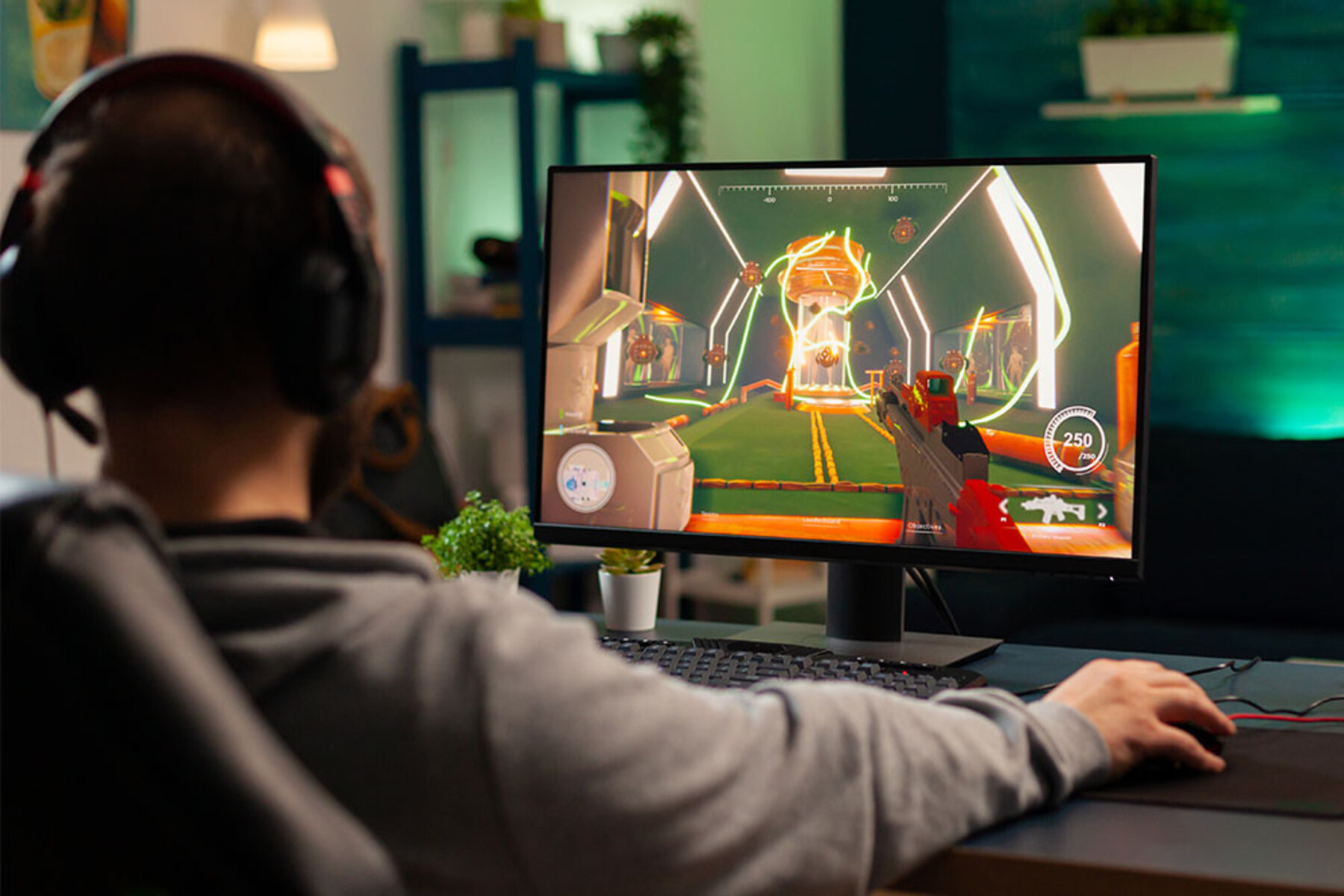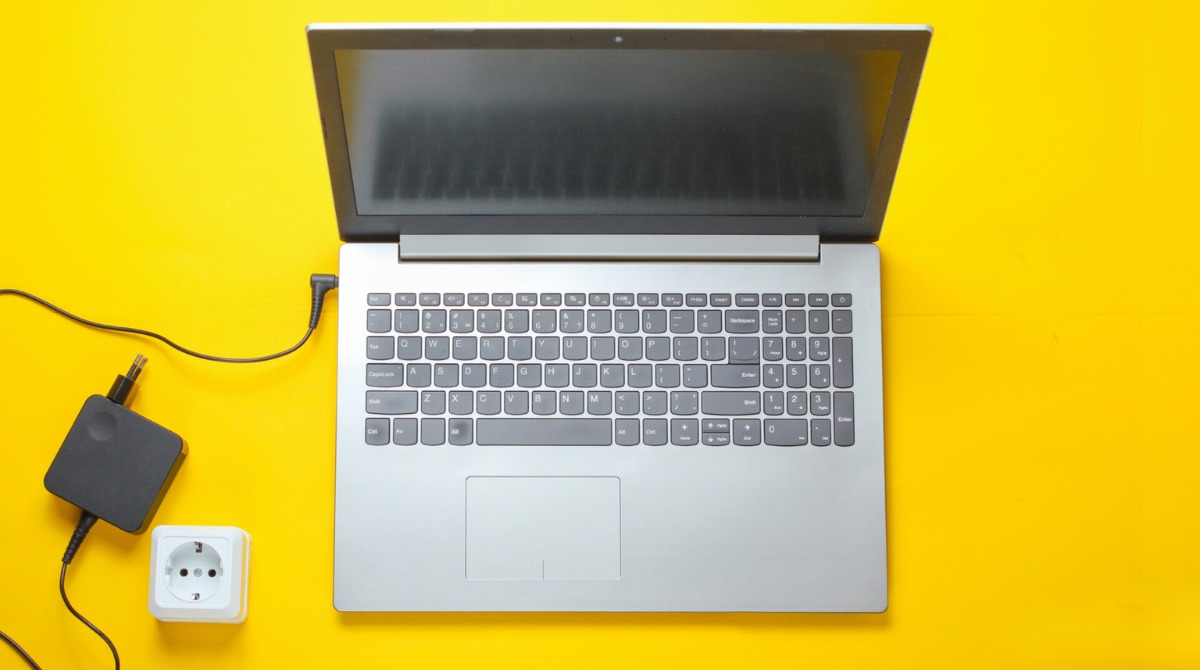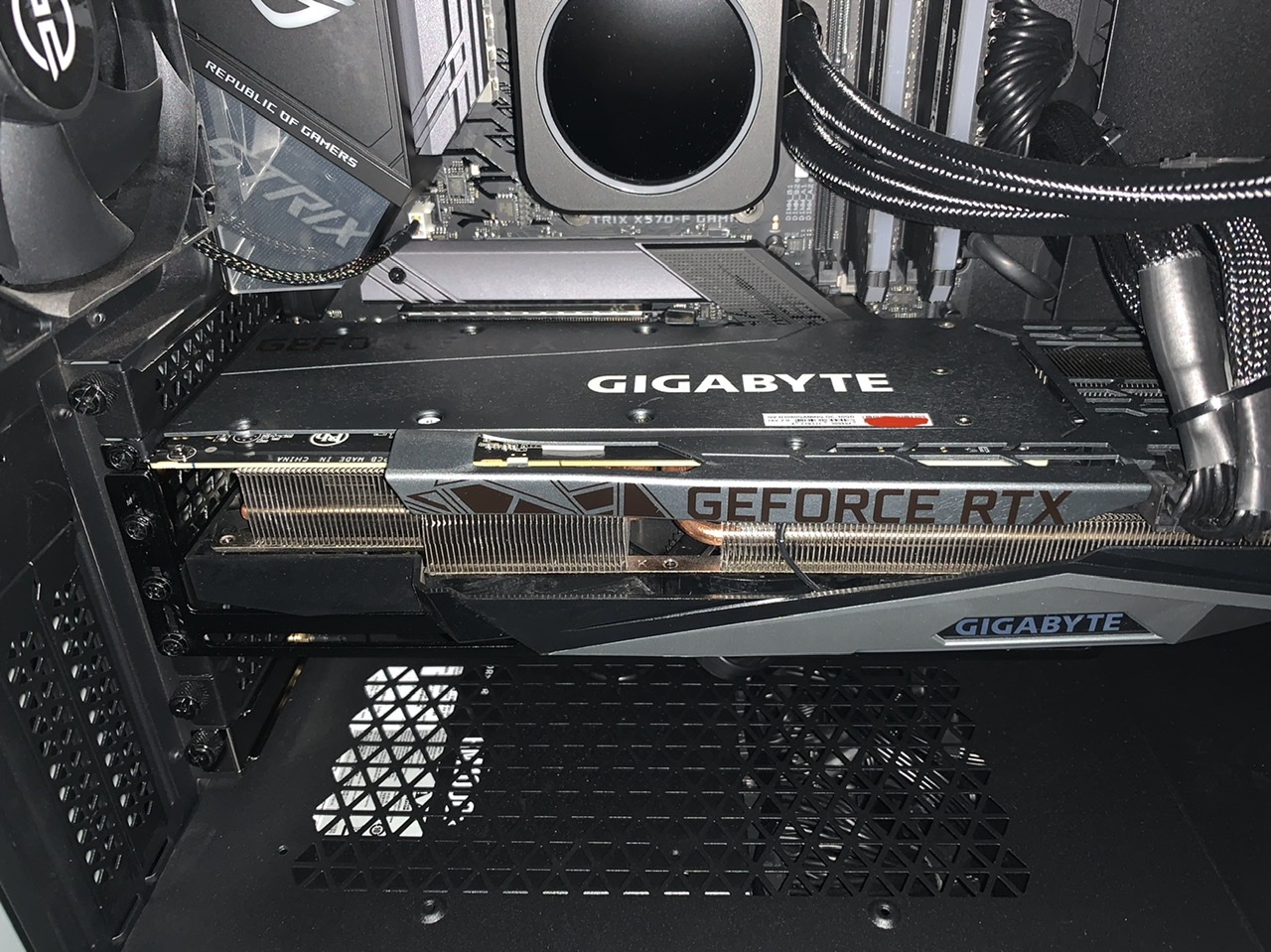Introduction
Graphics cards are vital components in modern computers that enable users to enjoy visually stunning graphics in games, multimedia applications, and graphic-intensive software. However, one frustrating issue that many users encounter is their graphics card unexpectedly turning off. This sudden shut down can disrupt workflow, gaming sessions, and overall user experience.
To better understand why this problem occurs, it’s crucial to have a basic understanding of how graphics cards function. Essentially, a graphics card is responsible for rendering images, videos, and animations by processing visual data from the computer’s CPU and converting it into signals that can be displayed on a monitor.
When a graphics card shuts off, it can be indicative of various underlying issues, such as overheating, insufficient power supply, outdated or incompatible drivers, or hardware malfunctions. While frustrating, these issues are not necessarily insurmountable and can often be resolved with a few troubleshooting steps.
In this article, we will delve into the causes of graphics card shutdowns and explore various methods to fix and prevent this issue. By following the steps outlined in this guide, you will be able to troubleshoot and resolve the problem, ensuring smooth and uninterrupted graphics performance on your computer.
Understanding the Graphics Card
A graphics card, also known as a video card or GPU (Graphics Processing Unit), is a critical component that determines the visual performance of a computer. It is responsible for accelerating and rendering images, videos, and 3D graphics, delivering a smooth and immersive visual experience.
Graphics cards contain a dedicated GPU, specialized memory, and a cooling system to handle the intensive processing required for graphics-intensive tasks. The GPU performs complex calculations and transforms data into visual output, while the memory allows quick access to required textures, shaders, and other resources.
Graphics cards have their own processing power, independent of the computer’s CPU, allowing for parallel processing and faster rendering. This dedicated processing capability makes graphics cards essential for tasks like gaming, video editing, graphic design, and scientific simulations.
Modern graphics cards often have multiple display outputs, enabling users to connect multiple monitors or use advanced display technologies like HDR (High Dynamic Range) and 4K resolution. Some high-end graphics cards also support technologies like ray tracing, which enhances lighting and reflections for more realistic graphics.
The performance of a graphics card is measured by factors such as its clock speed, number of CUDA cores (or stream processors), memory capacity, memory bandwidth, and the type of rendering technologies it supports. Higher-end graphics cards generally offer better performance and can handle more demanding tasks.
Graphics cards are typically slotted into the computer’s motherboard and are connected to the power supply unit (PSU) to ensure they receive adequate power. They also require proper cooling to prevent overheating, which can cause performance issues or even permanent damage to the card.
Understanding the fundamentals of a graphics card is essential for troubleshooting and resolving issues like unexpected shutdowns. By familiarizing yourself with how it works and the components involved, you can effectively identify and address potential problems, ensuring optimal performance and longevity of your graphics card.
Causes of Graphics Card Shutting Off
Experiencing a graphics card shutting off can be frustrating, especially when you’re in the middle of a gaming session or working on a graphic-intensive task. To resolve this issue, it’s important to identify the underlying causes. Here are some common culprits:
- Overheating: Graphics cards generate a considerable amount of heat during operation. If the card’s cooling system is inadequate or if there is a buildup of dust, the temperature can rise to dangerous levels. To prevent damage, the graphics card may shut off abruptly as a safety measure.
- Insufficient Power Supply: Graphics cards require a sufficient power supply to function properly. If your power supply unit (PSU) cannot deliver the required amount of power, the graphics card may shut off to protect itself and other components from damage.
- Outdated or Incompatible Drivers: Drivers serve as a communication bridge between the operating system and the graphics card. Outdated or incompatible drivers can cause conflicts, resulting in unexpected shutdowns. Regularly updating your graphics card drivers can help prevent this issue.
- Hardware Issues: Faulty hardware components, such as a damaged graphics card or a malfunctioning PCIe slot, can lead to abrupt shutdowns. This can occur due to physical damage, loose connections, or aging components.
It’s important to note that multiple factors can contribute to your graphics card shutting off, and it may not always be a single cause. Identifying the cause will help you take the appropriate steps to resolve the issue and ensure smooth operation.
Overheating
Overheating is a common cause behind graphics card shutdowns. Graphics cards generate a significant amount of heat during operation, especially when handling graphic-intensive tasks like gaming or rendering high-resolution videos. If the card’s cooling system is inadequate or if there is a buildup of dust, the temperature can rise to dangerous levels, triggering the graphics card to shut off as a protective measure.
When a graphics card overheats, several factors can contribute to the issue. Here are some common causes of overheating:
- Dusty or Blocked Cooling Fans: Over time, dust and debris can accumulate on the cooling fans of the graphics card, hindering their ability to effectively dissipate heat. A blocked or clogged cooling system can lead to increased temperatures and potential shutdowns. Regularly cleaning the fans and ensuring proper airflow can help prevent overheating.
- Inadequate Airflow in the Computer Case: If your computer case has poor airflow or is tightly packed with components, it can restrict the circulation of cool air. As a result, hot air tends to get trapped, causing the temperature inside the case to rise. This can have a direct impact on the graphics card’s temperature. Improving the overall airflow in your computer case by adding more fans or optimizing cable management can help alleviate overheating.
- Overclocking: Overclocking refers to pushing the clock speed and voltage of the graphics card beyond the manufacturer’s recommended limits to achieve higher performance. However, this can also lead to increased heat generation. If not properly managed and accompanied by adequate cooling, overclocking can cause the graphics card to overheat, resulting in shutdowns. Adjusting the overclocking settings or reverting to the default values can help address this issue.
- Insufficient Thermal Paste: Thermal paste is a compound applied between the graphics card’s GPU and the cooling system to facilitate heat transfer. If there is insufficient or degraded thermal paste, the heat dissipation can be compromised, leading to higher temperatures. Applying a fresh layer of thermal paste can help improve heat transfer and prevent overheating.
- Faulty or Aging Cooling System: Over time, the fans and heat sinks in a graphics card’s cooling system may wear out or fail due to dust accumulation, bearing issues, or motor malfunctions. A faulty cooling system cannot effectively dissipate heat, resulting in overheating. In such cases, replacing the cooling system or seeking professional assistance may be necessary.
Regular maintenance, such as cleaning the cooling fans, optimizing airflow, and avoiding excessive overclocking, can help mitigate the risk of overheating and prevent graphics card shutdowns. By addressing these issues, you can ensure the longevity and optimal performance of your graphics card.
Insufficient Power Supply
One of the common causes of graphics card shutting off is an insufficient power supply. Graphics cards require a sufficient and stable power supply to operate properly. When the power supply unit (PSU) fails to deliver the necessary power, the graphics card may shut off to protect itself and other components from damage.
Here are some factors that can contribute to insufficient power supply:
- Inadequate PSU Wattage: Each graphics card has a recommended power requirement specified by the manufacturer. If your PSU does not meet or exceed this requirement, it may struggle to provide the necessary power, leading to shutdowns. It is essential to ensure that your PSU has enough wattage to meet the power demands of your graphics card and other components.
- Faulty or Aging PSU: Over time, the components in a PSU can deteriorate, leading to reduced power delivery capabilities. A faulty or aging PSU may not be able to supply the required power consistently, resulting in shutdowns. In such cases, replacing the PSU with a reliable and higher-rated one can help resolve the issue.
- Inadequate PCIe Power Connectors: Many graphics cards require additional power through PCIe power connectors. If your PSU does not have the necessary connectors or if they are not properly connected, the graphics card may not receive sufficient power, causing it to shut off. Ensuring that all power connectors are securely connected is crucial for proper power delivery.
- Power Fluctuations: In some cases, unstable power supply from the electrical outlet can lead to graphics card shutdowns. Power fluctuations or voltage drops can cause sudden power interruptions to the graphics card, triggering shutdowns. Using a reliable surge protector or a UPS (Uninterruptible Power Supply) can help stabilize the power supply and protect your components.
- Multiple Power-Hungry Components: If your system has multiple power-hungry components like high-end CPUs, multiple hard drives, or additional peripherals, it can strain the PSU’s capacity. This can result in insufficient power being supplied to the graphics card, leading to shutdowns. Upgrading to a higher-capacity PSU can help alleviate the power supply issue.
Ensure that your PSU meets the power requirements of your graphics card and other system components. If experiencing shutdowns due to insufficient power supply, upgrading the PSU or consulting with a professional can help address the issue and provide stable power to your graphics card.
Outdated or Incompatible Drivers
Outdated or incompatible drivers can cause conflicts and result in unexpected shutdowns of the graphics card. Drivers serve as a communication bridge between the operating system and the graphics card, enabling them to work together harmoniously. When the drivers are not up to date or incompatible with the operating system or other software components, it can lead to instability and shutdowns.
Here are some issues related to outdated or incompatible drivers that can cause graphics card shutdowns:
- System Incompatibility: Newer graphics cards often require updated drivers to properly function with the latest operating systems. If you have recently upgraded your operating system or installed a new graphics card, using outdated drivers that are not compatible with the OS version can lead to shutdowns. Check for driver updates specifically tailored to your graphics card model and the operating system you are using.
- Software Conflicts: Drivers may conflict with other software components or applications installed on your system. This can result in instability and sudden shutdowns. Certain software utilities or conflicting driver installations can interfere with the proper functioning of the graphics card. Ensuring that you have the latest drivers that are specifically compatible with your system can help prevent such conflicts.
- Bug or Glitch: Sometimes, outdated graphics card drivers can contain bugs or glitches that affect the stability and performance of the card. These issues can lead to unexpected shutdowns or system crashes. Manufacturers regularly release driver updates that address known bugs and improve compatibility, so keeping your drivers up to date is crucial for avoiding such issues.
- Lack of Driver Optimization: Graphics card manufacturers continually optimize drivers to enhance performance, fix compatibility issues, and ensure stability. By using outdated drivers, you may miss out on these optimizations, potentially leading to shutdowns or diminished graphics performance. Regularly updating your drivers can help ensure that your graphics card functions optimally.
To prevent graphics card shutdowns caused by outdated or incompatible drivers, it is recommended to periodically check for driver updates from the graphics card manufacturer’s website or use specialized driver update software. Updating your drivers can help resolve conflicts, ensure compatibility with the operating system, and provide overall stability and performance improvements for your graphics card.
Hardware Issues
Hardware issues can also contribute to the unexpected shutdowns of a graphics card. These issues can stem from faulty or damaged components within the graphics card or from problems with other hardware components in the system. Identifying and addressing these hardware issues is essential for resolving the shutdown problem.
Here are some common hardware issues that can cause graphics card shutdowns:
- Damaged Graphics Card: Physical damage to the graphics card, such as a cracked circuit board or a malfunctioning fan, can lead to shutdowns. This can occur due to mishandling, excessive heat, or other accidents. Inspecting the graphics card for any visible signs of damage and replacing it if necessary can help alleviate this issue.
- Loose Connections: Loose connections between the graphics card and the motherboard, or between other components like the power supply or display cable, can cause intermittent power supply or disrupted communication. This can result in shutdowns. Ensuring that all connections are secure and properly seated can help resolve this issue.
- Faulty PCIe Slot: The PCIe (Peripheral Component Interconnect Express) slot on the motherboard where the graphics card is installed can sometimes develop faults. Loose contacts or degraded slot integrity can cause instability and sudden shutdowns. Trying the graphics card in a different PCIe slot or seeking professional help to diagnose and repair the slot can potentially resolve the issue.
- Incompatible Hardware: Some hardware components in your system, such as the power supply or motherboard, may not be fully compatible with the graphics card. This can lead to power issues or conflicts that result in shutdowns. Checking the compatibility of the graphics card with your system specifications and consulting with the manufacturer or a professional can help identify and address any incompatibility issues.
- Aging Components: Over time, electronic components can wear out and become prone to failures. Capacitors and other critical components on the graphics card or other hardware may degrade or fail, leading to unstable operation and shutdowns. In such cases, replacing the aging hardware components is often necessary to resolve the issue.
Identifying and addressing hardware issues can be more challenging than software-related problems. If you suspect hardware issues as the cause of your graphics card shutdowns, it may be best to seek professional assistance or contact the manufacturer for further guidance, especially if your hardware is still under warranty.
Fixing Graphics Card Shutting Off
Experiencing graphics card shutdowns can be frustrating, but there are several steps you can take to troubleshoot and resolve the issue. By following these troubleshooting methods, you can identify the underlying cause and take appropriate measures to fix and prevent your graphics card from unexpected shutdowns.
- Monitor the Graphics Card Temperature: Install software tools like GPU-Z or SpeedFan to monitor the temperature of your graphics card. If you notice that the temperature is consistently reaching high levels, it could be an indication of inadequate cooling. Ensure that the cooling fans and heat sinks are clean, free from dust, and functioning properly. Consider improving airflow within your PC case and optimizing cable management to enhance cooling efficiency.
- Ensure Adequate Power Supply: Check if your power supply unit (PSU) meets the power requirements of your graphics card. If necessary, upgrade to a higher-capacity PSU to ensure sufficient power delivery. Examine all power connections, including PCIe power connectors, to ensure that they are secure and properly connected. If you suspect power fluctuations, consider using a reliable surge protector or UPS to stabilize the power supply.
- Update Graphics Card Drivers: Check for the latest drivers from the graphics card manufacturer’s website. Install updated drivers that are compatible with your operating system and ensure they are properly installed. Regularly updating your drivers can address compatibility issues, fix bugs, and provide performance optimizations.
- Check for Hardware Issues: Inspect your graphics card for physical damage, such as cracked components or malfunctioning fans. Ensure that all connections, including the PCIe slot, are secure and properly seated. If you suspect hardware compatibility issues, consult with the manufacturer or seek professional assistance.
By following these troubleshooting steps, most graphics card shutdown issues can be resolved. However, if the problem persists even after trying these solutions, it is advisable to seek professional help or contact the graphics card manufacturer for further assistance. Remember that timely maintenance, regular updates, and proper cooling are essential to prevent future shutdowns and maintain the optimal performance of your graphics card.
Monitor the Graphics Card Temperature
Monitoring the temperature of your graphics card is vital in preventing unexpected shutdowns and ensuring optimal performance. Graphics cards generate a significant amount of heat during operation, especially when handling graphic-intensive tasks. Monitoring the temperature can help identify if overheating is the cause of the shutdowns and allow you to take appropriate measures to address it.
Here are some steps to effectively monitor the temperature of your graphics card:
- Install Temperature Monitoring Software: There are various free software tools available that allow you to monitor the temperature of your graphics card. Popular options include GPU-Z, MSI Afterburner, and SpeedFan. Install one of these tools and launch it to display real-time temperature readings.
- Observe Temperature Readings: Keep an eye on the temperature readings while performing graphic-intensive tasks like gaming or rendering. Typically, graphics cards operate within a safe temperature range, but if you notice that the temperature is consistently reaching high levels (generally 90°C/194°F or higher), it could be a sign of inadequate cooling. This may trigger the graphics card to shut off to protect itself.
- Clean Cooling Fans and Heat Sinks: Over time, dust and debris can accumulate on the cooling fans and heat sinks of the graphics card, hindering their ability to efficiently dissipate heat. Regularly clean these components using compressed air or a soft brush to remove any build-up. This will help maintain optimal cooling performance and prevent overheating-related shutdowns.
- Improve Airflow in the PC Case: Ensure that your computer case has proper airflow to keep the internal components cool. Place the case in a well-ventilated area, away from obstructions. Create adequate space between components to allow for efficient airflow. Consider installing additional case fans or upgrading to more efficient cooling solutions if necessary.
- Optimize Cable Management: Proper cable management inside your case can help improve airflow and prevent cables from obstructing the cooling fans or heat sinks of your graphics card. Organize and secure cables using cable ties or Velcro straps to ensure they do not block the airflow or create unnecessary heat buildup.
By regularly monitoring the temperature of your graphics card and taking appropriate measures to maintain optimal cooling, you can prevent overheating-related shutdowns. Ensuring clean cooling components, proper airflow, and efficient cable management will contribute to the longevity and optimal performance of your graphics card.
Ensure Adequate Power Supply
Having an adequate and stable power supply is crucial for the proper functioning of your graphics card. Insufficient power supply to the graphics card can result in unexpected shutdowns and other performance issues. To prevent such problems, it is important to ensure that your power supply unit (PSU) can deliver the necessary power to your graphics card and other system components.
Here are some steps to ensure an adequate power supply for your graphics card:
- Check PSU Wattage: Determine the power requirements of your graphics card specified by the manufacturer and ensure that your PSU can meet or exceed that wattage. If your PSU falls short, consider upgrading to a higher-capacity PSU to provide sufficient power to your graphics card and other components.
- Refer to Manufacturers Recommendations: Consult the graphics card manufacturer’s website for any specific power supply recommendations for your graphics card model. Some graphics cards may have additional power requirements beyond the PCIe slot and may require the connection of additional power cables from the PSU.
- Inspect Power Connections: Ensure that all power connections from the PSU to your graphics card are properly connected and securely seated. Check both the main power connection(s) and any additional power cables required by your graphics card. Loose or improperly connected power cables can result in insufficient power delivery and ultimately lead to shutdowns.
- Consider Power Fluctuations: Unstable power supply, such as power fluctuations or voltage drops, can also cause shutdowns. To protect your system from such issues, consider using a reliable surge protector or an Uninterruptible Power Supply (UPS). These devices help stabilize the power supply and protect your components from sudden power interruptions.
- Check Power Supply Health: Over time, PSUs can degrade or develop faults. If you suspect that your PSU is not functioning properly, consider testing it or replacing it with a reliable and higher-rated PSU. A faulty or aging PSU may fail to provide the necessary power, leading to shutdowns and other system instability.
Ensuring an adequate power supply to your graphics card is crucial for its proper functioning and to avoid unexpected shutdowns. By checking the PSU wattage, inspecting power connections, considering power fluctuations, and maintaining a healthy PSU, you can ensure that your graphics card receives the necessary power to operate optimally.
Update Graphics Card Drivers
Keeping your graphics card drivers up to date is essential for system stability and optimal performance. Outdated or incompatible drivers can cause conflicts, resulting in unexpected shutdowns and other issues. Regularly updating your drivers ensures that your graphics card functions smoothly with the latest software updates and enhancements.
Here are some steps to effectively update your graphics card drivers:
- Identify Your Graphics Card Model: Determine the exact model of your graphics card. You can check the manufacturer’s website, the documentation that came with your computer, or use system information tools like CPU-Z or GPU-Z to identify the model.
- Visit the Manufacturer’s Website: Go to the website of the graphics card manufacturer (e.g., NVIDIA, AMD) and navigate to the driver download section.
- Choose the Correct Driver: Locate the section where you can find drivers specific to your model and operating system. Download the latest driver that matches your system specifications. Be sure to select the correct operating system version and architecture (32-bit or 64-bit).
- Uninstall Old Drivers: Before installing the new driver, it is recommended to uninstall the old driver completely. You can do this by going to the “Device Manager” in the Windows Control Panel, locating your graphics card under the “Display Adapters” category, right-clicking on it, and selecting “Uninstall device.” Follow the prompts to remove the old driver.
- Install the New Driver: After uninstalling the old driver, run the downloaded driver installation file and follow the on-screen instructions to install the new driver. It is important to follow the installation process carefully and to restart your computer if prompted.
- Use Driver Update Software: If manually updating drivers seems daunting, you can also use driver update software, such as Driver Booster, Driver Easy, or Snappy Driver Installer. These programs can automatically scan your system, detect outdated drivers, and assist you in downloading and installing the latest drivers for your graphics card.
Regularly updating your graphics card drivers helps ensure compatibility with the latest software, improves stability, and enhances performance. By keeping up with driver updates, you can avoid conflicts that may result in unexpected shutdowns and maintain a smooth user experience with your graphics card.
Check for Hardware Issues
When experiencing graphics card shutdowns, it is essential to diagnose and address any potential hardware issues that may be causing the problem. Hardware issues can stem from both the graphics card itself or other components within the system. Identifying and addressing these issues is crucial for resolving the shutdown problem.
Here are some steps to check for hardware issues that may be causing graphics card shutdowns:
- Inspect the Graphics Card: Carefully examine the graphics card for any visible signs of damage or physical defects. Look for cracks or bends in the circuit board, damaged fans, or dislodged components. Physical damage can lead to system instability and unexpected shutdowns. If you find any noticeable damage, it may be necessary to replace the graphics card.
- Check All Connections: Ensure that all connections involving the graphics card are properly seated and secured. This includes the connections between the graphics card and the motherboard, the power supply connectors, and any other cables associated with the graphics card. Loose connections can result in intermittent power supply or disrupted communication, leading to shutdowns or other performance issues.
- Test in a Different PCIe Slot: If you suspect a faulty PCIe slot, try installing the graphics card in a different available slot on the motherboard. This can help determine if the original slot is causing the issue. Be sure to consult the motherboard documentation to verify the compatibility and limitations of alternate slots.
- Check for Hardware Compatibility: Verify that your graphics card is fully compatible with your system’s specifications, including the motherboard, power supply, and other hardware components. Sometimes, certain combinations of hardware can cause conflicts or inadequate power supply, leading to shutdowns. Check the documentation provided by the graphics card manufacturer as well as your system’s specifications to ensure compatibility.
- Seek Professional Assistance: If you have performed the above checks and are still experiencing shutdowns, it may be necessary to seek professional assistance. Contact the manufacturer’s support team or consult a qualified technician who can thoroughly diagnose and troubleshoot your hardware components. They can provide expert guidance in identifying and resolving any underlying hardware issues.
Identifying and addressing hardware issues can sometimes be challenging without the necessary expertise. If you are unsure or uncomfortable performing the checks yourself, it is always best to seek professional help. Resolving hardware issues will help restore the stability and performance of your graphics card, eliminating unexpected shutdowns.
Conclusion
Graphics card shutdowns can be frustrating and disrupt your gaming or work sessions. However, by understanding the causes and following the appropriate steps, you can troubleshoot and resolve this issue. Overheating, insufficient power supply, outdated drivers, and hardware issues are commonly encountered culprits for graphics card shutdowns.
Ensuring that your graphics card stays within safe temperature ranges can prevent overheating-related shutdowns. Regularly cleaning the cooling fans and optimizing airflow in your PC case will help maintain optimal cooling performance. Additionally, checking the power supply wattage, securing power connections, and using surge protectors or UPS can ensure sufficient and stable power delivery to your graphics card.
Updating your graphics card drivers regularly is essential to prevent conflicts and ensure compatibility with the latest software. Checking for hardware issues, such as physical damage, loose connections, or hardware compatibility, can help identify and address any underlying problems.
By following these troubleshooting steps and seeking professional assistance when necessary, you can resolve graphics card shutdowns and enjoy uninterrupted performance from your graphics card. Remember to perform regular maintenance, keep your drivers up to date, and ensure a stable power supply to optimize the lifespan and performance of your graphics card.
So, if you’re experiencing graphics card shutdowns, don’t despair. Take a systematic approach to diagnose and fix the issue, and soon you’ll be back to enjoying smooth, uninterrupted graphics performance.







